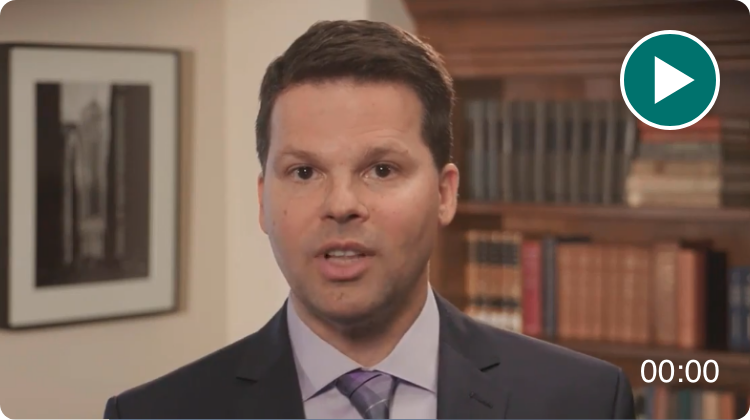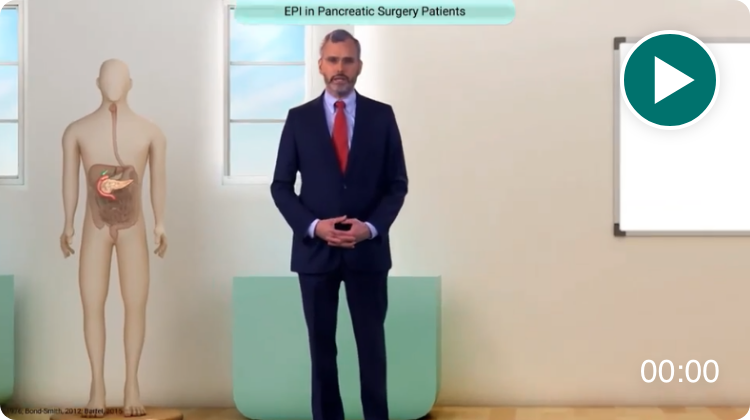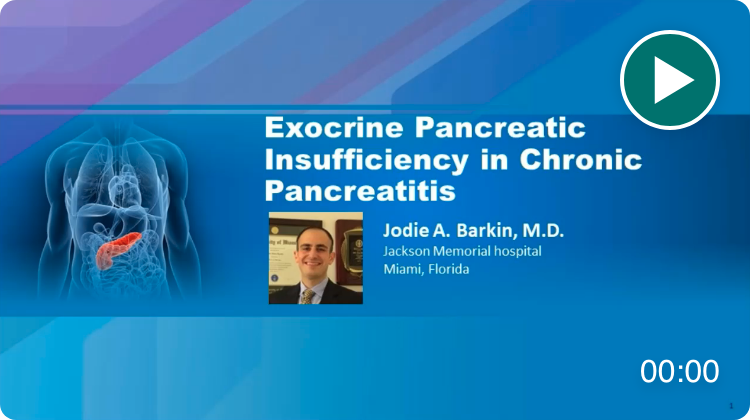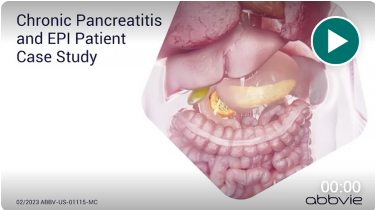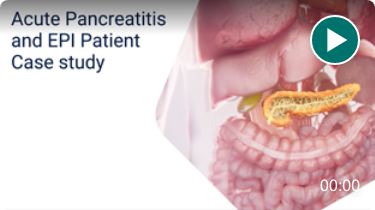
EPI Education
Take a deep dive into EPI and learn from experts in the field.
About EPI: EPI pathogenesis, symptoms, and diagnosis
Etiologies of EPI: Recognize EPI and the barriers to diagnosis
Management of EPI: Key information for managing EPI
Case Studies: Experts present case-based narratives on EPI
Select one or more filters below to explore topic-specific resources.
Transcript
So, how do we make the diagnosis of exocrine pancreatic insufficiency
What we do, it's a combination of the patient's symptoms, pertinent medical history, it's very important to get a good history from the patient, and some testing.
When it comes to the history, I like to ask about family history to see if they have any type of risk factors that may have led to the development of chronic pancreatitis. Family history of cystic fibrosis, hereditary pancreatitis, cancers, and others.
It's very important also to ask the patients if they have ever had any history of pancreatic resection that they may have forgotten actually to mention. So, if you are with your patient and you have radiology available, take a look and see if they have had an ultrasound, CT scan, an MRI recently, and I would say within the past year and see if any abnormalities has been found that you may have missed or you may have not been communicated.
When it comes to symptoms, symptoms can be very nonspecific. So, it's important to ask in detail, How frequently do you move your bowels Do you have diarrhea Do you move your bowels soon after having particularly a fatty meal It's important to ask the patients, particularly if they're with a significant other, Do you ever see fat in the stool, fat mixed with the stools As a significant other, they may say yes because they see and they can see it also in the borders of the toilet, which the patient may miss because they are just not looking.
Nocturnal bowel movements is the other one that should be a red flag and indicate some type of malabsorption. That's just not normal. Frequently, I ask my patients when they give me a very convincing history that this may be EPI just to take a picture. So, if you are having bowel movements with what sounds like steatorrhea, I would ask the patient, take a picture, send it to my email, and let's take a look.
We have some tests available. One of the newer one is the fecal elastase. One of the advantages of a fecal elastase is that you only need a small amount of stool in order to do the test, but it has to be well-formed. One of the disadvantages of this test is that it's not very sensitive, particularly in early stages of the disease.
Another test that it's available is a 72-hour stool collection, and we do this test to analyze the amount of fat that it's been excreted when the patient eats on one 100 grams of fat every day. So, the stool needs to be collected for three consecutive days. And it's very cumbersome, not only for the patient, for the amount of stool that are going to be collecting, but also for the lab when this stool is going to be analyzed.
Another way of making the diagnosis of exocrine pancreatic insufficiency is by doing a breath test. These tests, it's being done frequently in Spain and it's spearheaded by Dr. Enrique Muñoz. This test, it's not commercially available in the United States.
Other tests that can be used are pancreatic stimulation test. Pancreatic stimulation test can be done using secretin or CCK. We measure the amount of bicarb that it's being secreted, and we can also measure enzyme output.
And remember, these tests are going to be very helpful for making the diagnosis of chronic pancreatitis, but it doesn't mean that the patient has EPI.

Diagnosis of EPI
Learn how these 3 considerations may be helpful in determining an EPI diagnosis.

Take an immersive journey into the physiology of the exocrine pancreas and the pathophysiology of EPI.


